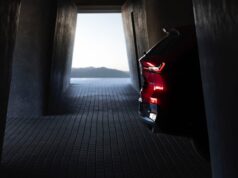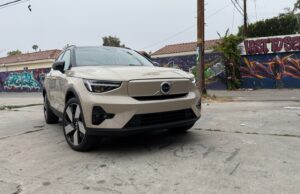
According to a study by the SUV Owners of America, SUVs are safer than passenger cars by 5-7 percent. The study consisted of 1997-2005 vehicles.
SUVs have become quite controversial in the past few years as gas prices have skyrocketed and drivers are becoming more environmentally conscious. Because of these new concerns many people are trading in their large SUVs for smaller vehicles. According to the SUVOA President Barry McCahill, “The public is being told by some that small cars are now as safe as larger cars and SUVs, and can do all the same things. But, 99 percent of cars can no longer tow a boat or camp trailer, and small cars are not as safe as larger cars and SUVs. Just as important, light trucks like minivans and SUVs can carry more passengers safely than passenger cars.”
McCahill also states that the argument that SUVs are causing more deaths to drivers of these smaller vehicles is inaccurate. He argues that there has not been an increase in the number of fatalities due to SUV/ small car crashes. The number of deaths has also decreased in the last few years.
The National Highway Traffic Safety Administration (NHTSA) is going to be releasing an “early Assessment” of 2006 traffic crashes soon. The SUVOA is hoping to provide extra support and analysis due to the dangers of driving smaller cars. The analysis that the SUVOA conducted was completed by a retired NHTSA engineer.
CNN:
There is also a report today on CNN about vehicle safety. In general the vehicles that top the “safest car” lists are larger cars, such as the Chevy Astro Van and BMW 7-Series. The cars on the bottom of the list tended to be small 4-door or 2-door vehicles, such as the Kia Rio and Acura RSX.
“Overall, midsize and large luxury cars have the lowest death rates, according to the Institute, while small 4-door cars have the highest death rates. Of the 15 vehicles with the lowest death rates, none were small cars.”
Full Story: CNN
Internal Related Stories:
Should the State of California Place a Tax on Gas-Guzzling SUVs?
PRESS RELEASE
WASHINGTON, April 19 /PRNewswire-USNewswire/ — In anticipation of the
release of the National Highway Traffic Safety Administration’s (NHTSA)
“Early Assessment” of 2006 traffic crashes, SUV Owners of America, released
today an expert analysis of 1997-2005 data for vehicle performance in all
kinds of crashes. It found that SUVs are 5-7 percent safer than passenger
cars in reducing fatality risk. This is particularly important for
consumers that may be downsizing to cut fuel costs — a dangerous tradeoff.
SUVOA President Barry McCahill said, “The public is being told by some
that small cars are now as safe as larger cars and SUVs, and can do all the
same things. But, 99 percent of cars can no longer tow a boat or camp
trailer, and small cars are not as safe as larger cars and SUVs. Just as
important, light trucks like minivans and SUVs can carry more passengers
safely than passenger cars.”
“It’s also inaccurate to say that SUV drivers are causing more deaths
to occupants of smaller vehicles. There has been no increase in fatalities
because of the size mismatch between SUVs and cars, and in 2005 the trend
even turned downward for these kinds of crashes,” he added.
“People buy vehicles that meet their needs, and they like to do so with
good information in hand. Our intent in augmenting the NHTSA 2006 early
fatality summary is not to advocate the purchase of any vehicle type, but
to provide additional perspective,” he said. “We also advise consumers to
read the comprehensive new data summary now available from the Insurance
Institute for Highway Safety (IIHS).”
“All vehicles have become safer because of increased safety belt use,
air bags, electronic stability control, improved vehicle structure and
greater awareness about traffic safety. But the laws of physics that
ultimately rule the road have not changed. Equipped with identical safety
equipment, the larger vehicle also gets safer and always performs better in
a crash than a smaller one,” McCahill said.
McCahill explained that NHTSA’s “Early Assessment” is based on vehicle
registrations and reflects all occupant fatalities, and the effect of
vehicle, roadway situation and driver behavior. The NHTSA analysis does not
measure the safety performance of just the vehicle.
“The ‘Early Assessment’ chronicles what occurred on the road in 2006,
and that’s important to know. Our analysis covers nearly a decade of crash
data, giving consumers additional information to help guide their vehicle
purchase decisions,” he said.
McCahill pointed out that NHTSA’s New Car Assessment Program (NCAP)
provides test results on the crash performance of individual vehicles to
help guide consumer purchasing decisions. SUVOA’s analysis, by a retired
NHTSA engineer, considered both total occupant fatality rates and then
solely driver fatality rates, the latter to get a more accurate picture of
the vehicle’s performance (since every vehicle has at least a driver).
He said the NHTSA analysis does not control for the fact that SUVs,
because they typically hold more occupants, tend to have more occupant
fatalities when a crash occurs.
These are the key findings based on vehicles that were involved in
crashes:
— When the analysis considers only driver fatalities (focusing more on
the vehicle’s performance), and most recent years data (2003-2005) to
include the contribution of the newest safety features, SUVs are
5-7 percent safer than passenger cars.
— In crashes involving a light truck/van (includes SUVS) and a passenger
car, occupant fatalities in passenger cars remained fairly constant
from 2001-2004, but between 2004-2005 they declined by 4.3 percent.
— For both passenger cars and SUVs there has been a substantial reduction
in overall occupant fatality rates, and by 2005 the rates are virtually
identical per 100,000 registered vehicles (13.64, passenger car /
13.84, SUVs).
— For both passenger cars and SUVs the occupant fatality rates in
rollover crashes have decreased. The percentage reduction from
1997-2005 is 15.7 percent for passenger cars and more than 19 percent
for SUVs.
— When considering the more prevalent frontal, side and rear crashes, by
2005 SUVs had become about twice as safe as passenger cars. In 2005,
SUVs had an occupant fatality rate in these crashes that was nearly 50
percent lower than passenger cars (10.42, passenger cars / 5.56 SUVs).
A copy of the full report (with graphics) is available at
http://www.suvoa.com.
SUVOA is a non-profit consumer organization dedicated to supporting the
rights and serving the interests of more than 80 million SUV, pickup,
crossover and Van Owners of America. Founded in 1999, SUVOA strives to
ensure balanced media reporting of light truck issues and represents our
supporters by educating federal and state policymakers.








